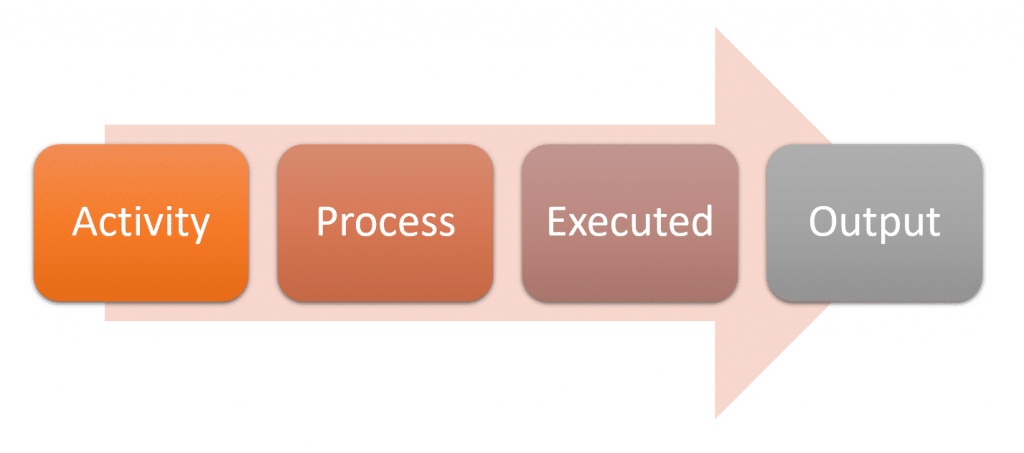Project Process according to Agile Method
Agile Methods is an Iterative Approach that involves developing software quickly to deliver to customers, allowing for quick review of requirements.
Changes are incorporated into the next Iterative iteration. Overall, the Agile Method has the following key principles and characteristics:
1. Must make customers satisfied with the prompt and continuous delivery of quality work.
2. Customer Involvement: Customers must play a close role in the development process, as we must add new requirements based on customer needs and be ready to assess the impact of changes.
Ready to meet customers’ constantly changing needs, even in the final stages of development, to give them the best competitive advantage. The Agile team must be prepared to embrace change — meaning they should anticipate potential changes in system requirements. Therefore, the system should be designed to accommodate those changes.
4. Maintain Simplicity: Avoid using complex development techniques and focus on simplicity.
5. Deliver usable work continuously every week to every month, but the overall time must not be too long.
6. User personnel and system development personnel must work closely and continuously until the project is completed.
7. Motivate project personnel by creating a positive and supportive environment, and by trusting each individual to complete assigned tasks to their full potential.
8. The most effective way to exchange information within a development team is through formal and informal discussions, meetings, and conversations.
9. Workpieces or usable work products are the first measure of project progress.
10. Emphasis on incremental development: Project sponsors, developers, and users must work together at a steady pace, with minimal or no constraints.
11. Continuous attention and monitoring of modern techniques and good design will help to promote better system development efficiency.
12. The best structures, requirements and designs come from self-managed development teams.
13. The development team must constantly review how they can be more effective and adapt their behavior based on these insights.
In the process of operating the system, the company will use the CMMI project operating standards and Agile Methods, divided into different phases, in which each phase will have tasks defined.
Responsibilities and follow up on progress to ensure compliance with the project plan can be summarized as the project implementation process as follows:

Get Requirement for Estimate Budget

- Activity
- It is something that the system must be able to process, for example, if it is a payment system, there must be a screen for recording the payment.
- Process
- Refers to the operating procedures of the system or the people involved in the work in the said activity.
- Executed
- Refers to the back-end work of the system, which is automatic work such as taking the results from recording and transferring them to another system.
- Output
- Refers to the results obtained from the operation of the system, such as reports, supporting documents.

Process Development : Agile
Development Process with Agile
Agile Methods is an Iterative Approach that involves developing software quickly to deliver to customers, allowing for quick review of requirements.
Changes are incorporated into the next Iterative iteration. Overall, the Agile Method has the following key principles and characteristics:
- Must satisfy customers with fast and continuous delivery of quality work.
- Customer Involvement: Customers must play an active role in the development process, as we add new requirements based on customer needs and are prepared to assess the impact of changes.
- Be ready to accept changing customer needs, even at the end of the development process, to give customers the most competitive advantage. Agile teams must prepare to handle change (Embrace Change), which means anticipating the system's needs that need to change and designing the system to cover those needs.
- Maintain Simplicity: Avoid using complex development techniques and focus on simplicity.
- Deliver usable work consistently every week to every month, but the overall timeframe must not be too long.
- User personnel and system development personnel must work closely and continuously until the project is completed.
- Motivate project personnel by creating a positive and supportive environment, and by trusting each individual to complete assigned tasks to their full potential.
- The most effective way to exchange information within a development team is through formal and informal discussions, meetings, and conversations.
- Work products or usable work products are the first measure of project progress.
- Emphasis on incremental development: Project sponsors, developers, and users must work together to achieve steady progress with minimal or no constraints.
- Continuous attention to and monitoring of modern techniques and good design will help to improve the efficiency of system development.
- The best structures, requirements and designs come from self-managed development teams.
- Development teams need to constantly reflect on how they can be more effective and adapt their behavior based on these insights.
In the process of operating the system, the company will use the CMMI project operating standards and Agile Methods, divided into different phases, in which each phase will have tasks defined.
Responsibilities and follow up on progress to ensure compliance with the project plan can be summarized as the project implementation process as follows:

Get Requirement for Estimate Budget

Topics for data collection
- Activity
- It is something that the system must be able to process, for example, if it is a payment system, there must be a screen for recording the payment.
- Process
- Refers to the operating procedures of the system or the people involved in the work in the said activity.
- Executed
- Refers to the back-end work of the system, which is automatic work such as taking the results from recording and transferring them to another system.
- Output
- Refers to the results obtained from the operation of the system, such as reports, supporting documents.

Topics for preparing data before starting system development
